How to Clear iPhone Storage
To help you free up space and keep your device optimized, we’ll show you different ways (there are 8) to clear your iPhone storage of photos, videos, documents, attachments, temp files, caches, and more. Read on!” меняем на “To help you free up space and keep your device optimized, we’ll show how to clear your iPhone storage of photos, videos, documents, attachments, temp files, caches, and more in 8 not always fast, but still easy steps. Read on!
Why Is My iPhone Storage Full?
Most iPhones have at least 64 GB of storage space installed. It sounds like a lot but it runs out quickly – there are a lot of potential data hogs on your device.
We’ll quickly review each data type so you know exactly where your precious space is going (and what data to nuke first).
- 👤 Personal data – Photos, videos, documents, and other files the user saved to the device.
- ✉️ Messages/attachments – Conversations, photos, videos, and other files received via email or messaging apps like Messages or WhatsApp.
- 📄 Caches – Cache files and temporary data used by iOS and apps.
- ⬇️ Downloaded files – Files downloaded from the internet (like a website or cloud storage service like Google Drive).
- 🧰 Apps – Apps downloaded and installed from the App Store
- ⚙️ System data – Files used by iOS for its operation.
To check your iPhone’s storage allocation:
Open the Settings app and tap General, then iPhone Storage. At the very top of the screen, review what data is taking up your device’s storage space (Apps, iOS, Mail, Photos, and System Data). Beneath that, you’ll find all the apps installed on your iPhone and how much space they are using up.

Use these indicators to decide what to clean up first. Not sure where to start? Below, we’ve compiled an easy-to-follow list of steps you can take to free up storage on your iPhone.
How to Clear Storage on iPhone
As we mentioned at the beginning of this article, we’ll show you how to free up storage on your iPhone in 8 simple steps.
Data is scattered around the device and there’s no way to delete everything at once without resetting your iPhone. Instead, we’ll show you how to clear your iPhone storage by cleaning up each data type one by one.
Step 1: Clear Your Browser Cache
Your iPhone’s web browser cache should be the first to go. Over time, it can take up loads of space due to storing high-resolution images and similar assets in order to cut loading time on certain pages.
This can be annoying because the cache may store such assets from pages that you will never visit again. Fortunately, cleaning it is easy and you don’t really need to worry about losing personal data.
To clear your Safari browser history:
Open the Settings app. Then, scroll down a bit and tap Safari. Scroll down to the PRIVACY & SECURITY section and tap Clear History and Website Data.
Make sure to tap Clear History and Data to confirm the action!

Step 2: Delete Your Apps Cache
Cleaning your app caches can help you reclaim even more storage space without deleting personal data. Social media and messenger app caches are especially notorious for taking up a lot of space; they usually involve lots of media files like photos and videos being downloaded or saved by users.
When it comes to clearing out those cluttered app caches on your iPhone, you’ve got two handy methods up your sleeve:
- First, some apps come with a built-in cache-clearing tool (although not all of them do).
- Second, you can opt for the classic delete-and-reinstall approach.
In our guide below, we’ll walk you through both methods for three popular apps: TikTok, WhatsApp, and Facebook. For more insights on how to clear caches in other apps, check out this tutorial: Clear Cache on iPhone.
Option A: Use In-App Settings
➡️ Deleting TikTok app cache:
Open the TikTok app and tap Profile in the bottom-right corner of the screen. Then, tap the menu icon (3 lines) in the top-right corner of the screen and tap Settings and privacy. Select Free up space.

Finally, tap the Clear cache button and close the app.

➡️ Deleting WhatsApp app cache:
Open the WhatsApp app and tap the Settings button in the bottom-right corner of the screen. Then, tap Storage and Data. Under the STORAGE section, tap Manage Storage. Under the CHATS section, tap on any conversation whose media files you want to delete.

Next, tap Select in the top-right corner of the screen. Then, tap the photos and videos you want to clear and tap the Trash icon in the bottom-right corner of the screen.
Tap Delete Item to delete the file.

➡️ Deleting Facebook app cache:
- Open the Facebook app and tap on the Menu button in the bottom-right corner of the screen.
- Then, tap the dropdown arrow beside Settings & privacy.
- Under the Preferences section, tap Browser.
- Under the Browsing Data beside Your browsing data, tap Clear.

Option B: Delete and Reinstall the App
To delete an app on your iPhone:
On your iPhone’s home screen, tap and hold on the app you want to delete and tap Remove App. Then, tap Delete App to confirm the action.

Step 3: Clear Duplicate Photos & Videos
Another easy way to clear space on your iPhone is by deleting duplicate photos and videos. These media files can take up more space than you initially suspect… The iPhone’s camera tools like Live Photos and HDR mode take multiple photos at a time.
Fortunately, iOS makes it really easy to delete duplicates. They are all saved in the Duplicates album in the Photos app, where you can easily merge or delete them with a few taps.
To clear duplicate photos and videos on your iPhone:
Open the Photos app and tap Albums at the bottom of the screen. Then, scroll down to the Utilities section and tap Duplicates. Next, tap Merge beside the set of duplicates you want to clear. Finally, tap Merge Exact Copies to confirm the action.

Managing your iPhone’s photo clutter isn’t just about deleting duplicates—it’s also about optimizing your collection. If you’ve got a surplus of unnecessary similar photos, there’s a clever trick to remove them with minimal fuss. Some iPhone cleaner apps, powered by cutting-edge tech, can automatically declutter your gallery.
Step 4: Offload the Apps
If you have apps that you don’t use often or won’t need in the near future, consider offloading them. Offloading an app deletes the app itself but keeps the app data, which usually includes user preferences, login credentials, user-generated content, and other you-specific data.
Offloading apps is a good option if you need to reclaim a lot of storage space quickly but still intend to use those apps in the future. In some cases, you may get a recommendation from iOS to offload your unused apps in the iPhone Storage menu (Settings app > General > iPhone Storage). This is what it looks like:

But if the above prompt doesn’t appear for you, you can also offload unused apps manually:
Open the Settings app and tap General. Then, tap iPhone Storage. Tap on any app you want to offload.

Next, tap Offload App. Finally, tap Offload App again when prompted to confirm the action.

Step 5: Remove Unused Apps
If you have apps you don’t plan on using anymore, just delete them. Apps take up a lot of space and can even grow in size when they get updated. You may opt to offload them, but that method still leaves the shortcut on your home screen and stores app data and cache files.
Step 6: Delete Message Attachments
If you receive photos, videos, documents, and other files via iMessage, they may still be stored as attachments in your Messages app – you can reclaim a lot of storage space by deleting them.
Fortunately, you can find and delete attachments through the Settings app. We’ll demonstrate its usage below.
To delete message attachments on your iPhone:
Open the Settings app and tap General. Tap iPhone Storage. Then, scroll down your list of apps and tap Messages.

Under the DOCUMENTS section, tap on the file type you want to purge first. For example, Videos. Tap Edit in the top-right corner of the screen. Select the files you want to erase and tap on the Trash icon.

Step 7: Utilize iCloud to Free Up Space on Your iPhone
- Photos – Enable iCloud for Photos to upload all media files to iCloud. This is good for your storage for 2 reasons. (1) You can access them from multiple devices without downloading them. (2) You can enable the Optimize Storage setting, which only keeps lower-resolution versions of your media on your device and stores the originals in iCloud.
- iCloud Drive – Many apps allow you to save data to your iCloud drive. The files won’t take up local storage space and are accessible from any device without having to download them.
- iCloud Mail – Unlike some mail apps that store data locally, iCloud Mail stores all of its data (including attachments) on its servers.
- Notes – While notes created with the Notes app don’t take up much space, you can also opt to store them in iCloud and save a few MB of local storage.
- Messages – The Messages app can take up a lot of space due to attachments like photos and videos. Enabled iCloud for Messages to store them on iCloud’s servers instead of on your device.
Step 8: Delete Duplicate Contacts
Duplicate contacts are tiny files but they are still a waste of space. They can also be annoying when you need to quickly make a call and you have to check 5 entries with the same name. Fortunately, cleaning up duplicate contacts takes little effort.
To delete duplicate contacts on your iPhone:
Open the Phone app and tap Contacts at the bottom of the screen. iOS will notify you if it detects any duplicate contacts. If you see Duplicates Found on-screen, tap View Duplicates.
Next, tap on the duplicates you want to delete. Alternatively, you can tap Merge All to merge all duplicates iOS found before deleting them.

Finally, tap Merge again to confirm the action.

Clearing Storage on iPhone: Honorable Mentions
We skipped these tips in the main part because, let’s be honest, these are usually the first things anyone tries when their iPhone starts running out of space. But just in case, here’s a quick rundown:
Method 1: Delete Unneeded Photos and Videos
We all have those photos and videos we hold onto “just in case,” but they end up eating a lot of space. Here’s a step-by-step on how to clean them up:
- Open the Photos app: Start by launching the Photos app on your iPhone. This is where everything is stored, from your latest holiday snaps to those random screenshots you’ve forgotten about.
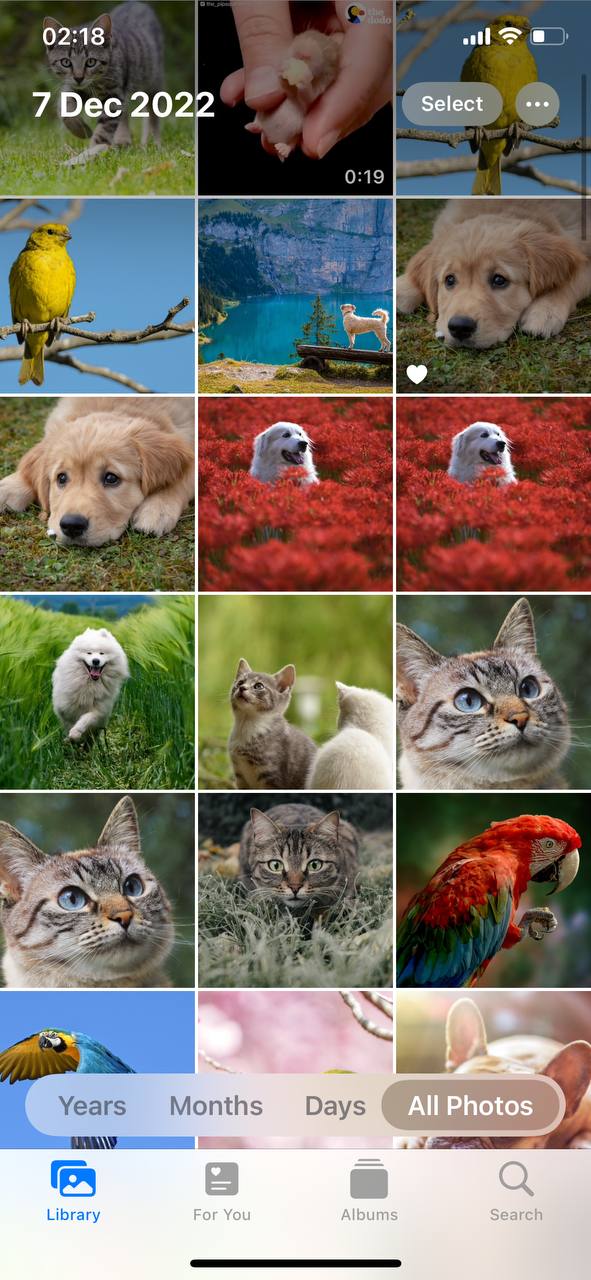
- Go to ‘Albums’: At the bottom of your screen, you’ll find the ‘Albums’ tab. Tap on it to see your photos organized in different categories, making it easier to find what you’re looking for.
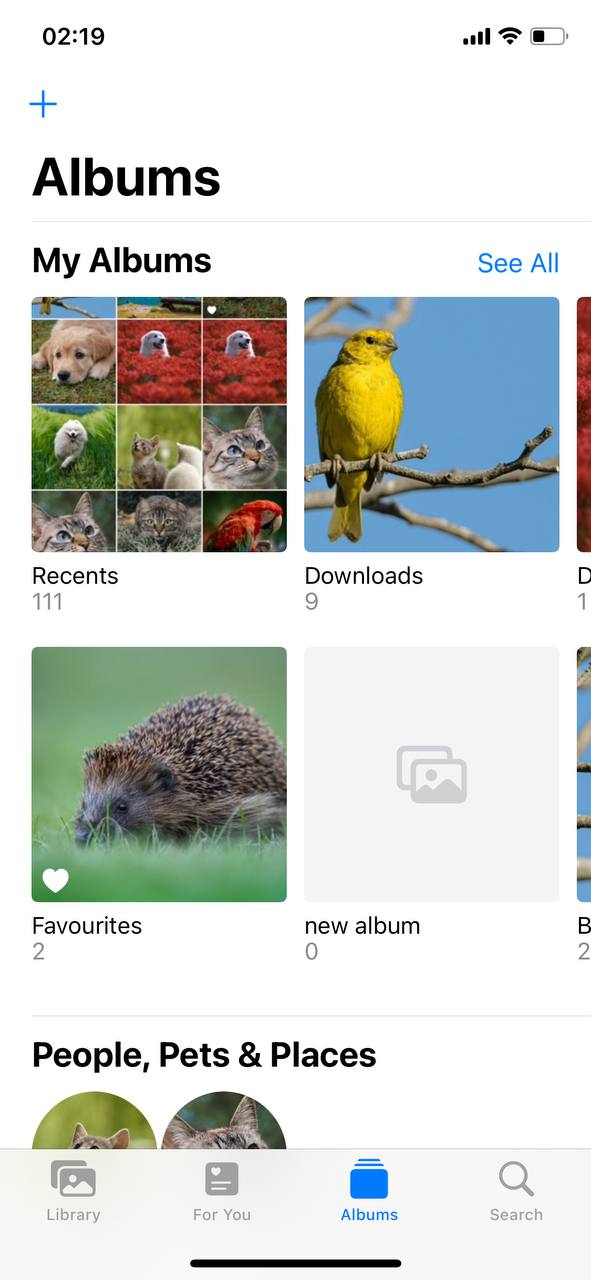
- Find ‘Media Types’: Scroll down to the ‘Media Types’ section. Here, your content is sorted by type, such as videos, selfies, and panoramas. Videos often take up the most space, so they’re a good place to start.
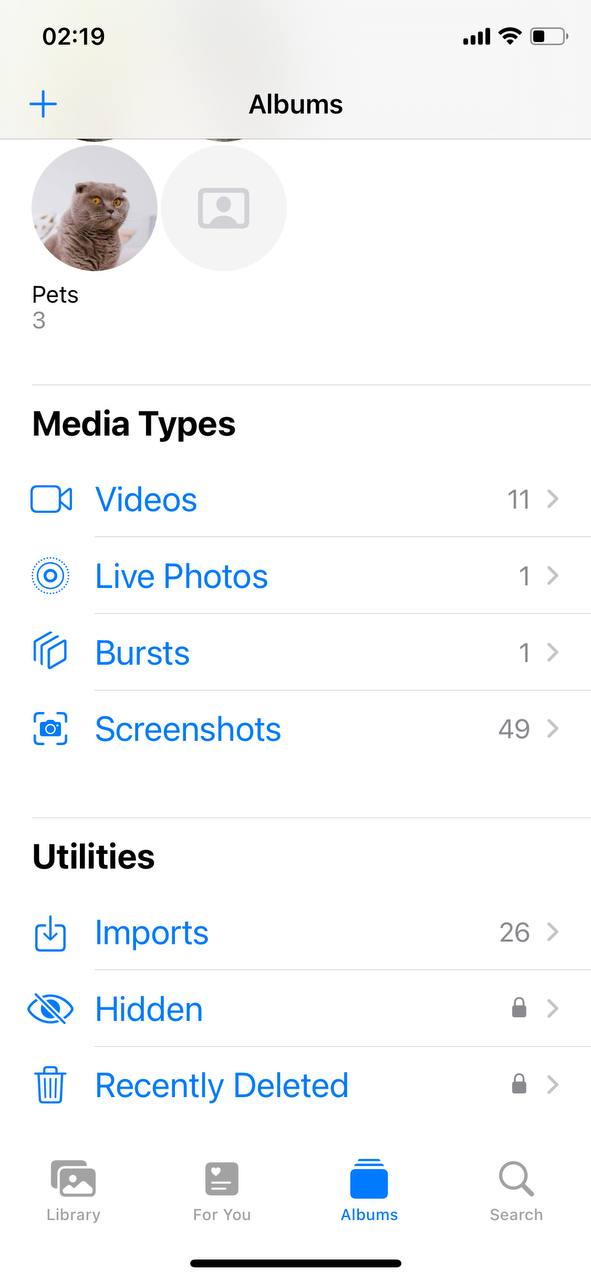
- Select the category to clean up: Tap on ‘Videos’ or any other category where you think you can free up some space. Maybe it’s time to let go of those slow-motion videos from two years ago?
- Review and select: Take a moment to look through your videos or photos. Tap ‘Select’ in the top right corner, then tap on the items you want to remove. Be honest with yourself about what you really need to keep.
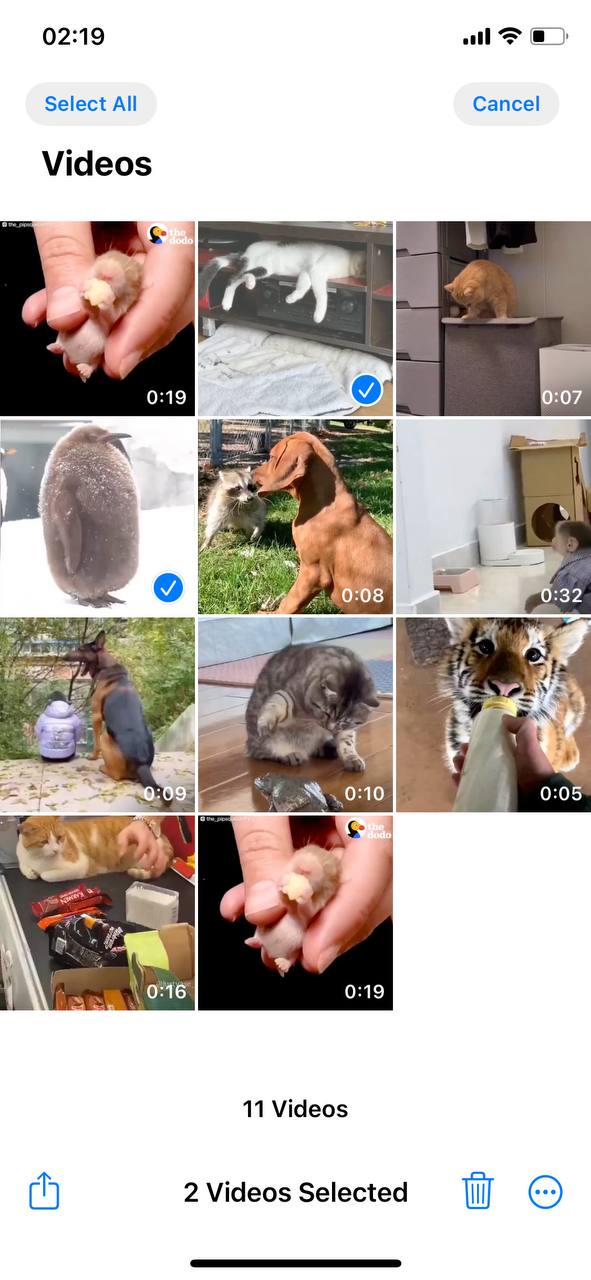
- Delete: Once you’ve selected the items to delete, tap the trash can icon and confirm. This will move them to the ‘Recently Deleted’ album.
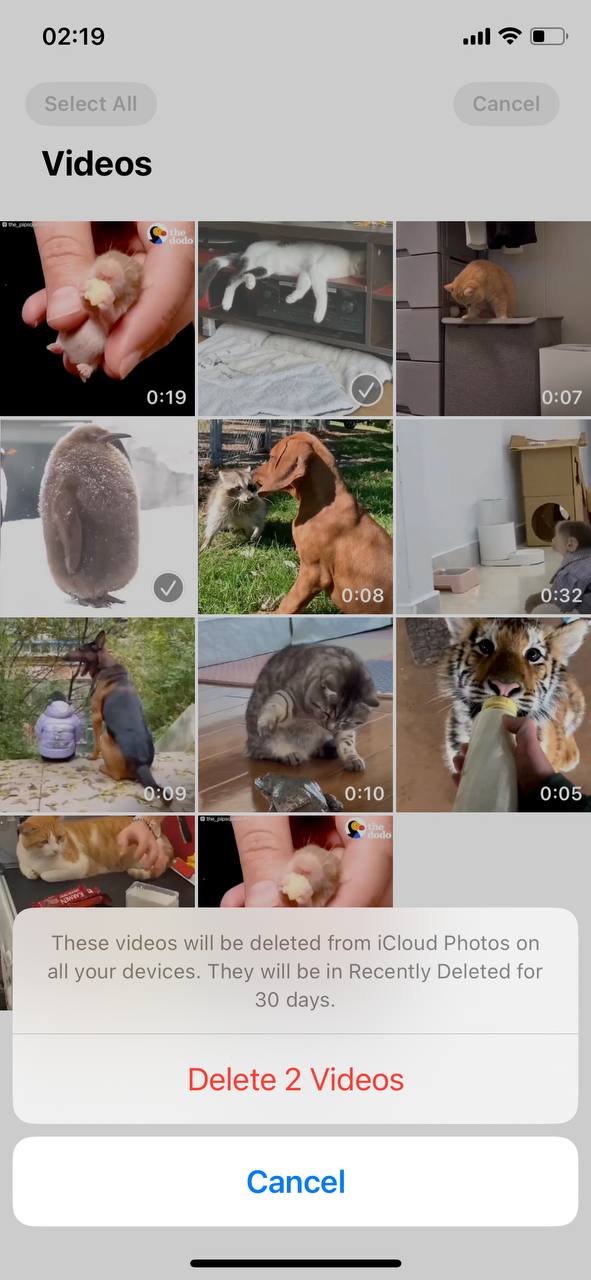
- Empty ‘Recently Deleted’: Don’t forget this step! Go to the ‘Recently Deleted’ album, tap ‘Select’, and then ‘Delete All’ to permanently remove the items and free up space.
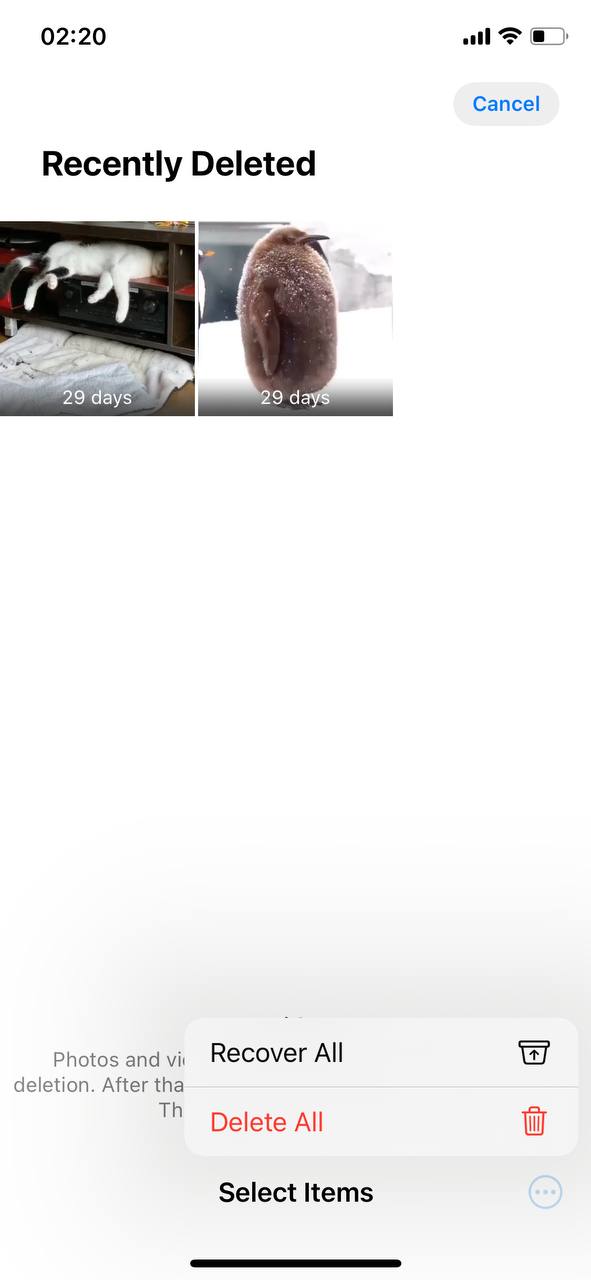
By following these steps, you’ll reclaim storage space that can be used for new memories or essential apps all while tidying up your photo library.
Method 2: Enable ‘Optimize iPhone Storage’ Feature
Running out of space but can’t bear to part with your photos and videos? Then ‘Optimize iPhone Storage‘ feature is your best friend. It stores the full-resolution versions in iCloud and keeps smaller, space-saving versions on your device. Here’s how to enable it:
- Tap into Settings: Start by opening your iPhone’s Settings app.
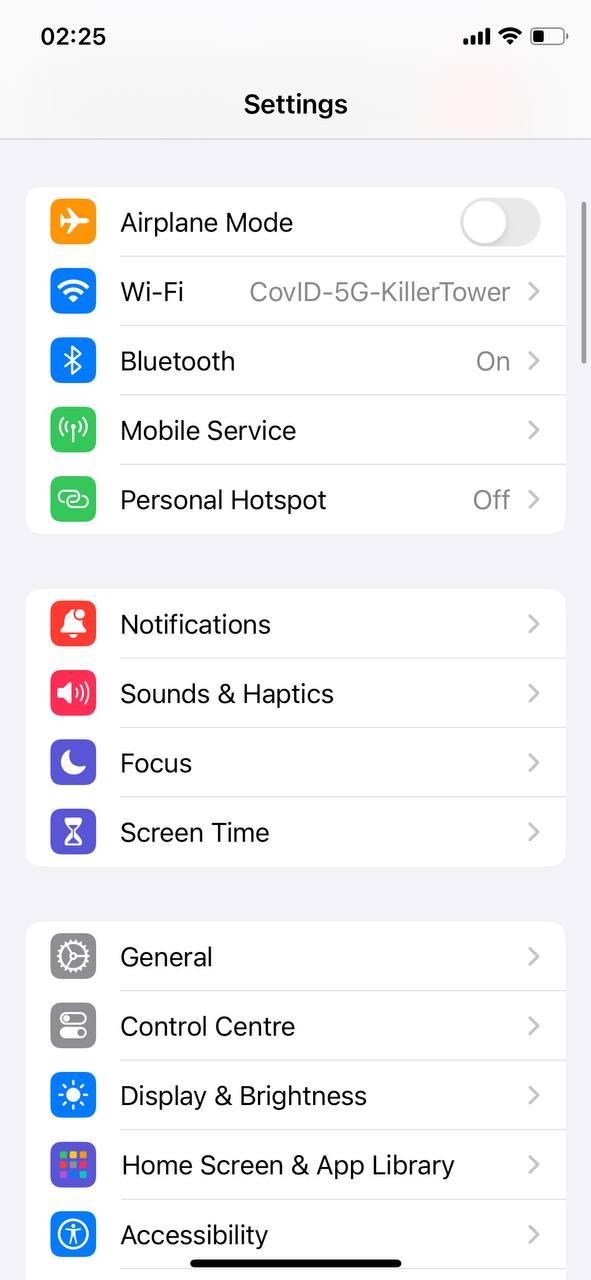
- Hit ‘Photos’: Scroll through the list until you find ‘Photos’.
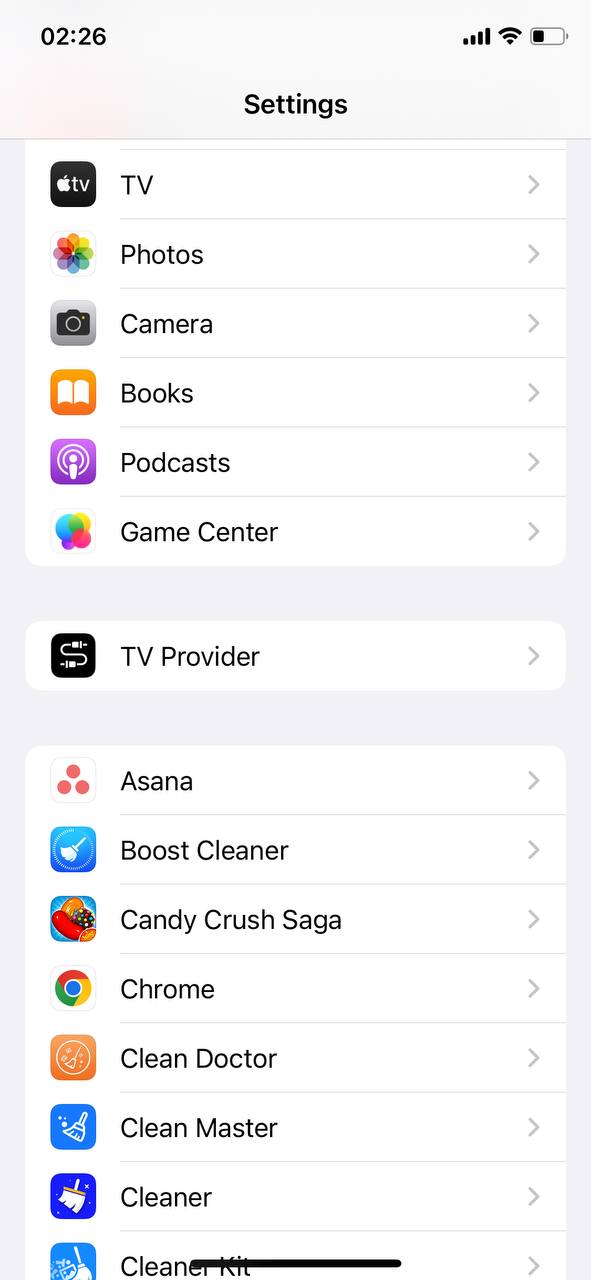
- Select ‘Optimize iPhone Storage’: You’ll see two choices here. Pick ‘Optimize iPhone Storage’. What this does is keep smaller, space-friendly versions of your photos and videos on your iPhone, while the originals are stored in iCloud. If you need the full-res version of a photo or video, it’ll download from iCloud next time you’re connected to Wi-Fi.
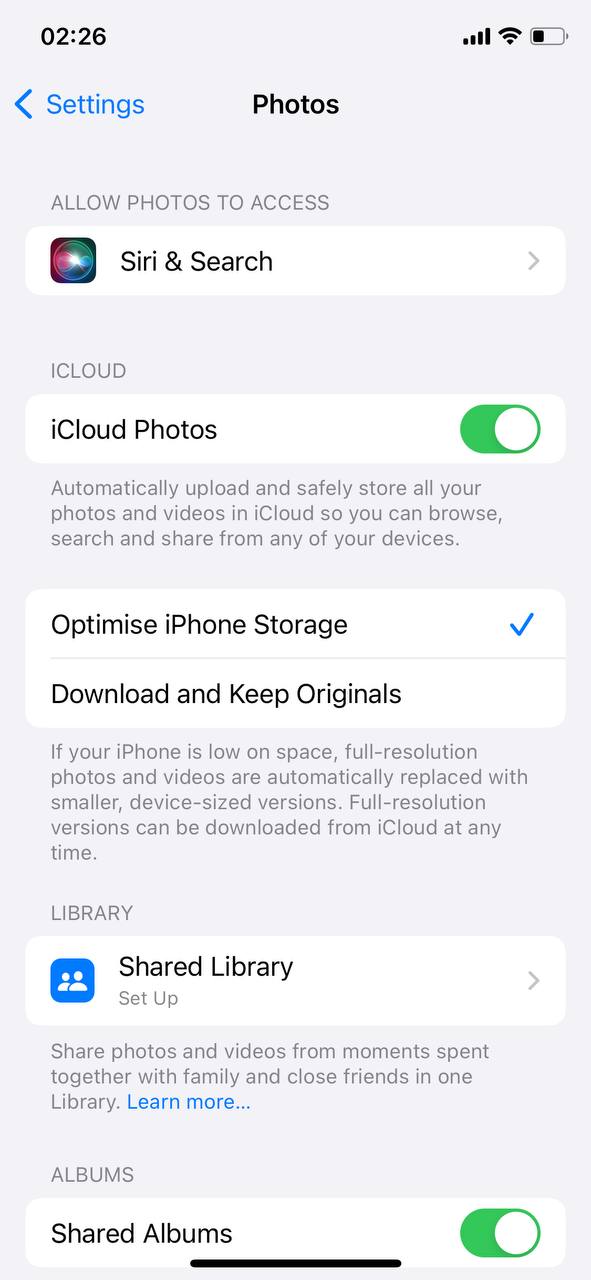
By turning on this feature, you’ll give your iPhone more free space for apps, music, and other content, while still keeping all your photos accessible in iCloud.
Method 3: Review Downloaded Music and Podcasts
Music and podcasts are great companions for our daily routines, but downloaded episodes and songs can quietly eat up a lot of space. Here’s how to spring clean your downloads:
- Open the Music or Podcasts app: Depending on what you want to clean up, start by launching either the Music app for your tunes or the Podcasts app for your episodes.
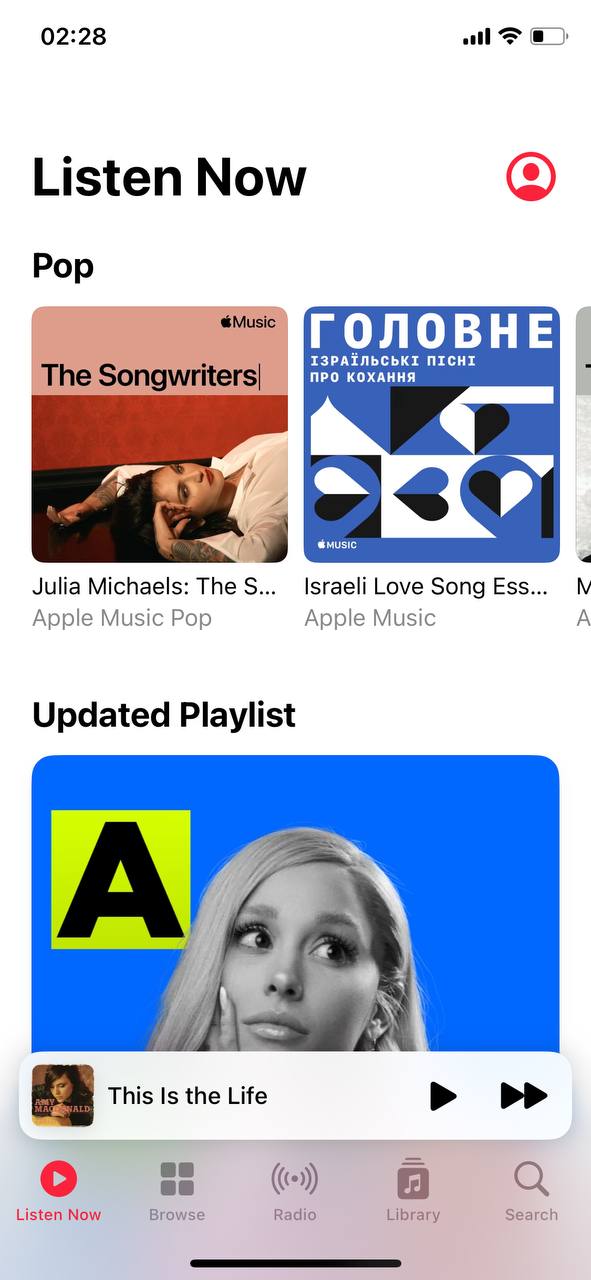
-
- For Music: If you’re in the Music app, go to your ‘Library’ and tap on ‘Downloaded Music’. Here, you’ll see everything you’ve downloaded, organized by artists, albums, and songs.
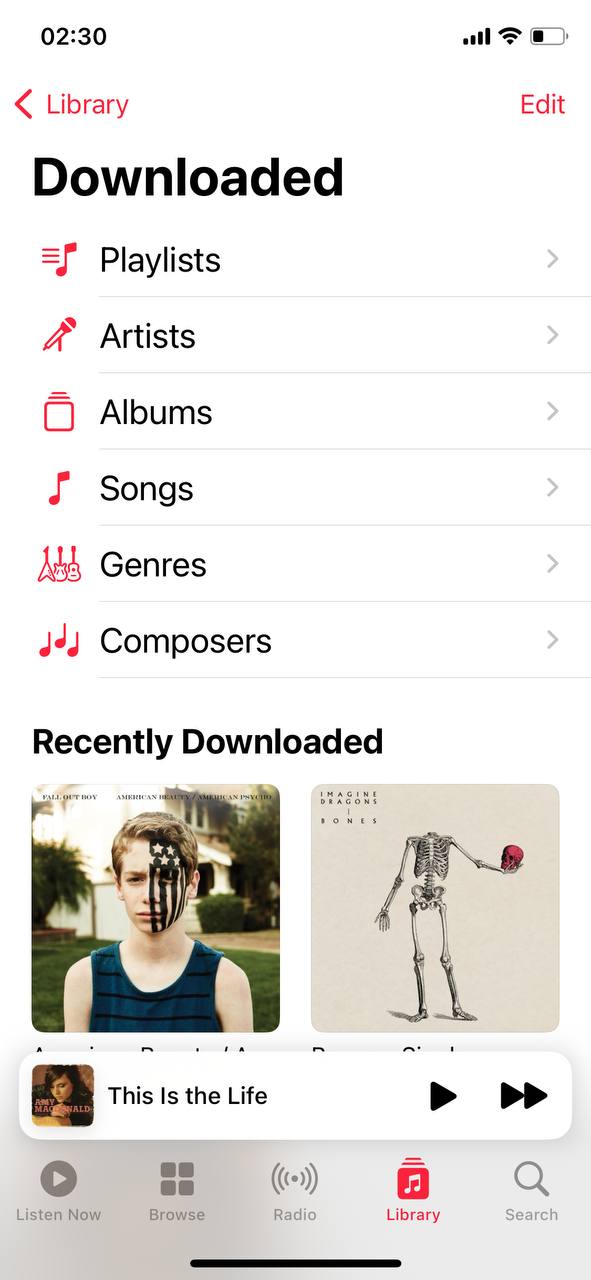
- For Podcasts: In the Podcasts app, head over to your ‘Library’, then tap ‘Downloaded Episodes’. You’ll find all the podcast episodes you’ve saved for offline listening.
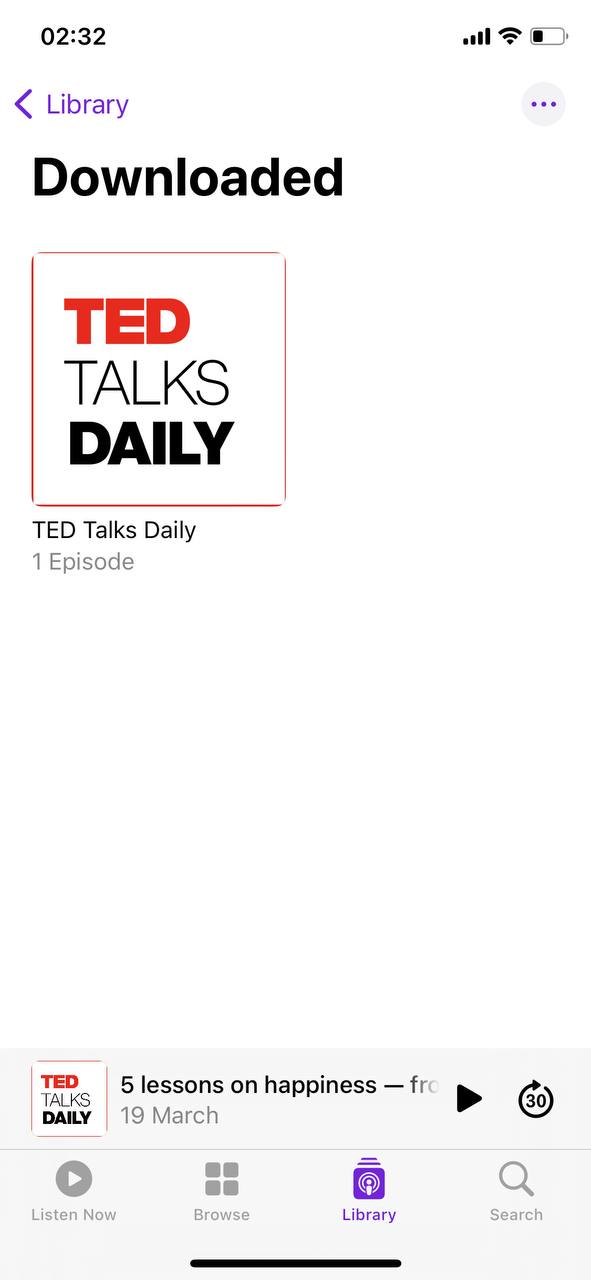
- For Music: If you’re in the Music app, go to your ‘Library’ and tap on ‘Downloaded Music’. Here, you’ll see everything you’ve downloaded, organized by artists, albums, and songs.
- Select the content to remove: Browse through your downloaded music or podcasts. Think about what you’ve already listened to or what no longer suits your taste.
- Delete individual items: Swipe left on any song or episode you want to remove and tap ‘Delete’. Then choose ‘Only Remove Download’ This will remove the file from your device but keep it in your library for streaming.
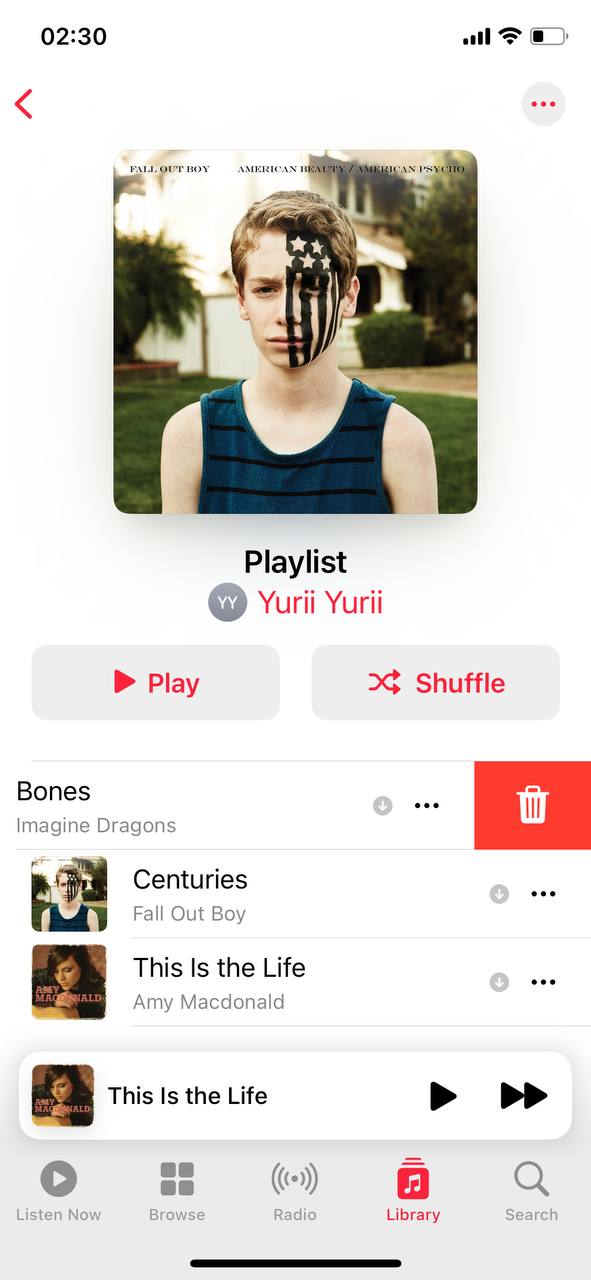
- Delete entire albums or podcasts: For a quicker clean-up, you can also delete entire albums or shows. For music, tap on the album and then on the three dots in the upper right corner to find the delete option. For podcasts, go to the show’s page, and you’ll see ‘Delete from Library’ to remove all downloaded episodes.
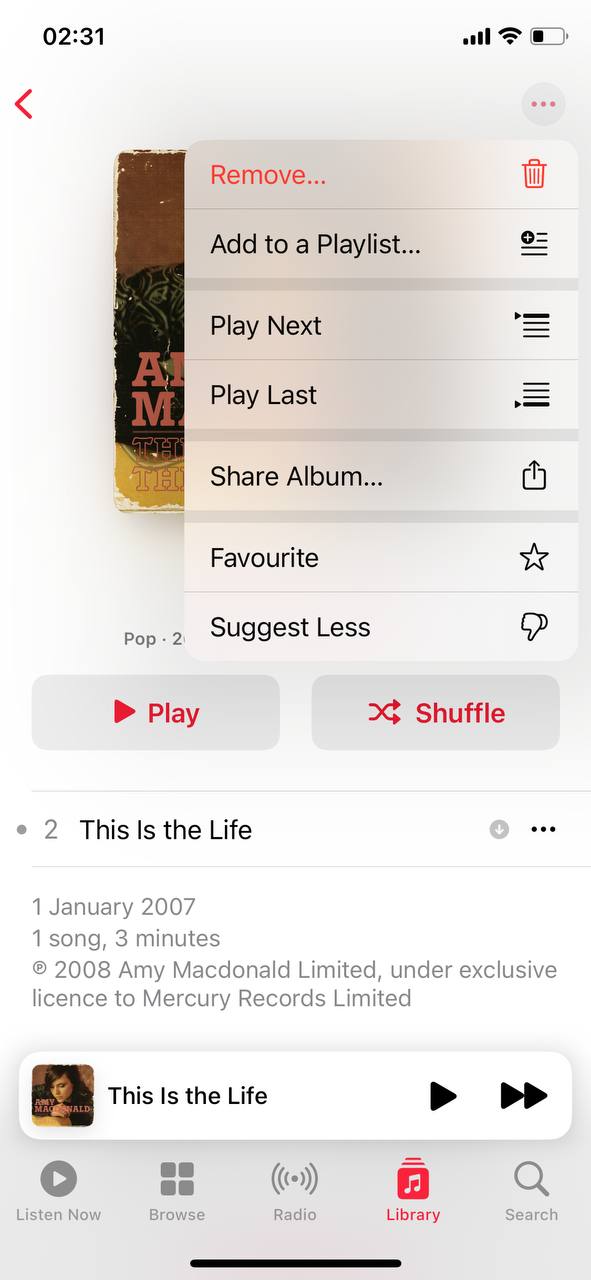
Regularly checking and clearing out your downloaded music and podcasts can free up significant amounts of space, so your iPhone is ready for new content whenever you are.
Method 4: Use Alternative Cloud Storage Services
Hit the limits of iCloud? No stress. There are plenty of other apps out there that can take the load off your iPhone. Here’s a quick look at some you might like:
- Google Drive: Handy for anyone who’s big on Google stuff. You start with 15 GB for free, which is really generous, and it works great with all the Google apps. You can grab it from the App Store and get your stuff uploaded pretty easily.
- Dropbox: It’s super easy to use and gives you 2 GB to start with. If you need more, they’ve got plans you can check out. Good for sharing files with friends or between your own devices. Find it in the App Store and see how it fits your needs.
- OneDrive: If you’re all about Microsoft and Office stuff, OneDrive could be your best bet. Starts you off with 5 GB for free. It’s all pretty seamless if you’re using Office apps a lot. Just download it from the App Store and start moving your files over.
- Box: This one’s great if you’re into security and working with a team. You get 10 GB free to start, which is pretty sweet. The app’s easy to use and you can get it from the App Store whenever you’re ready.
These apps are pretty cool for extra storage and they’ve all got their own thing going on. Just pick one that sounds like it’ll work for you and give your iPhone a bit of breathing room.
These might be the basics, but a little reminder never hurts. Keeping on top of these can help keep your iPhone’s storage in check without too much hassle.
FAQ
When your iPhone storage is full, it could lead to performance issues and eventually errors. Here’s how to clear storage on your iPhone quickly:
- Delete or offload unused apps
- Enable iCloud for Photos and activate the Optimize Storage setting
- Delete attachments from your messenger apps (including Messages)
- Clear your browser cache
- Delete app caches
- Delete or merge duplicate photos and videos
- Offload apps
- Remove unused apps
- Delete attachments from messenger apps (including the native Messages app)
- Use iCloud for apps like Photos, Messages, iCloud Mail, etc.
To free up space on your iPhone without deleting any photos or videos, enable iCloud for Photos and activate the Optimize Storage setting. Your iPhone will then only keep smaller, low-resolution versions of your photos and videos in its local storage and upload the originals to iCloud.
Here’s how to clear up your iPhone storage without deleting stuff:
- Merge duplicate photos and videos (Photos app > Albums > Duplicates)
- Enable iCloud and turn on Optimize Storage
- Merge duplicate contacts
- Offload infrequently used apps (deletes the app but keeps your data)
Conclusion
A full iPhone storage is always detrimental to your device – not only does it prevent you from saving data but it can also cause lag, errors, and even random shutdowns.
iOS provides many ways to help you manage your storage like automatically finding duplicates and giving you the option to offload apps. However, the best way to avoid this problem in the future is to practice good digital hygiene and purge unnecessary data every few weeks.
And make sure to utilize iCloud for most (if not all) of the apps it supports – especially Photos and Messages!














